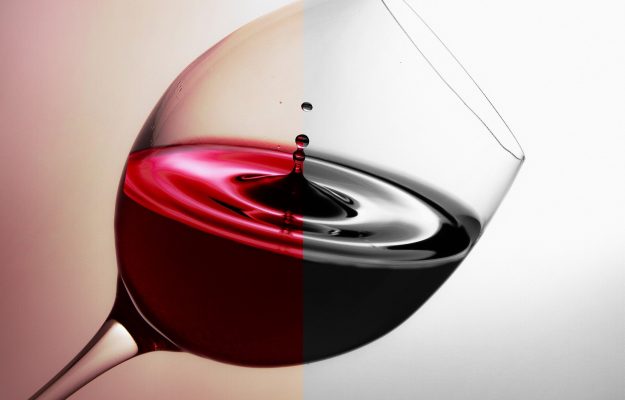An important signal of the resilience of Italian wine, a confirmation of its appreciation in the world even in the pandemic, and from which to restart. But this -2.2% in Italian wine exports in 2020 (compared to 2019) put down in black and white by Istat (as already reported by WineNews), partly hides the real difficulty that much of the entrepreneurial structure of Italian wine is experiencing, especially those small and medium realities focused on the top of the range that, despite a distribution scenario less polarized in the world than in Italy, have suffered the stop, still largely in place, of catering and travel, which, for a certain range of wine, remains predominant. Not to mention the fact that the first two months of 2020 had a major impact, with the world still out of the pandemic, China aside, and with shipments of Italian wine much accelerated compared to the norm (above all in the USA and UK), on the one hand, due to the fear of duties that never arrived, and on the other hand to anticipate the effects of Brexit that are beginning to be felt. In addition, another real aspect to be understood is how much of the Italian wine that has reached the markets has really ended up in the hands of consumers, and how much is still in the warehouses of importers and distributors, with a long wave of Covid that could prove to be more impactful than what has been seen so far, while waiting for a restart yet to be seen, but that the progress of vaccination campaigns around the world makes us hope it is getting closer. It is the reading, to WineNews, of entrepreneurs and managers of small and large companies, historical and younger, private companies and cooperatives, representing a good cross-section of what is the production world of Italy.
“If this is the result, we will take note of it, it means that the distribution model of Italian wine in the world has made it possible for some channels to experience very important growth compared to others that have suffered a lot. It means that Italian wine is a product that confirms a great attractiveness and it gives us hope for recovery when things will really start again. Of course, when we look at the balance sheets of many companies, we wonder how this could have been possible”, commented Renzo Cotarella, CEO of Marchesi Antinori, the most historic private company in the Italian wine business.
“The more the company had a part of the market shifted to the off-trade the more it withstood the crisis, those focused on the horeca suffered more, there is no doubt. And there is concern that this crisis will have enormous social consequences. We hope in the vaccines that are continuing, especially in the U.S. that are very important for the wine world, and we hope that when things restart, they will do so at full capacity, but until May-June 2021 the scenario will be very similar to 2020”, adds Roberta Corrà, managing director of Gruppo Italiano Vini (Giv) and president of Italia del Vino Consorzio.
“The export of 2020 is an average that tells of different situations, labels destined for the horeca world have suffered a lot, those who went on the off-trade, on the other hand, have also grown significantly. -2.2% - says Matteo Lunelli, head of Ferrari Gruppo Lunelli - is the average of a range with very negative situations in some market segments and very positive ones in others. On the whole, it is an important figure, it shows that Italian wine is holding up well, it means that Italian wine has a positive image and perception on the part of the consumer, but then there are many different situations hidden among the folds”.
Ettore Nicoletto, at the helm of the Bertani Domains group, with estates in Valpolicella, Marche and in the most important territories of Tuscany, also made a positive but cautious comment: “we can see that 2020 was a difficult year in which Italy defended itself very well if we look at the comparison with the great world districts. Then we need to understand the reasons for this. France, for example, has suffered from a strong dependence on outsourcing, greater than ours, and the duties in the USA. We must not get too excited about comparisons, but neither must we get too down on ourselves. A synthesis to explain this good defensive performance of Italian wine, I would say, is “ductility”, and the ability to adapt. The away-from-home sector has suffered a great deal, while retail has not, and Italian wine has shown itself to be transversal, capable of playing a leading role in a number of channels. Let’s see what happens from here on out: for us, the first few months are off to a good start compared to 2019, and the outlook for the quarter is positive”.
“Istat data refer to the world of wine in general, but there are substantial differences between the medium-low and medium-high categories. For Terra Moretti Vino”, explains Francesca Moretti, head of the wine branch of the Terra Moretti Group, “it is the wineries from Franciacorta (Bellavista and Contadi Castaldi) that suffer the most, losing around 15%, especially in Germany, the UK and Japan. On the other hand, Tuscany’s Petra, which, thanks to the work carried out in recent years, closed the year with a positive result despite the pandemic, with excellent performances in the USA, Switzerland and Russia. Sella & Mosca and Teruzzi were down around 10%. All in all, for a group like ours that depends 80% on the on-trade, this is not a totally negative result. We have high hopes for the figures for the first quarter of 2021, which are on par with those of 2019, but the road is still uphill, especially if a timely vaccination campaign does not start and the premises do not reopen”.
“It is data that must be interpreted. First of all, abroad, as we know - underlines Giampiero Bertolini, managing director of Biondi Santi Tenuta Greppo, the iconic winery and cradle of Brunello di Montalcino - it takes longer for sales to reach the market than for shipments. At the beginning of 2020, the growth of the USA has certainly favored this data, then it is necessary to understand if the wine is finished on the market or it is still in the stocks of importers. Another factor to underline is that, in any case, foreign countries have continued to buy Italian wines, top of the range wines and recognized brands, we have grown by double digits, for example, in important markets. Certainly, the brands that do not have strength on the market have suffered more”. “It is a figure that, on the whole, I read very positively - underlines Antonio Rallo, at the helm of the Sicilian griffe Donnafugata - without prejudice to the fact that companies that are very on-trade did not have this performance. This is a summary figure, but it is not the mirror of the entire world of Italian wine, medium and small companies have suffered more. Of course, this means that Italy as a whole has done well, that Italian wine is much loved and is a strong point for restarting, but we need to understand how to support small and medium-sized producers that produce great quality and are the ones that keep the value and reputation of Italian wine high”.
“It is a figure that is quite in line with what we have experienced in the company - comments Elvira Bortolomiol, at the head of the historic family business of Prosecco Docg - in fact, the world market, even though it seemed to be the one that would have had the most difficulty, in the end, held up very well. It certainly took a great deal of work, country by country, to deal with the specific difficulties. Now, however, it is more difficult: in January 2021 countries like Switzerland, Germany, USA, UK, showed signs of great suffering, because there is a year of great economic difficulty on the shoulders and there is not even the sprint dictated by the fear of duties in the U.S. and Brexit in the UK that accelerated imports last year in the early months”.
“For realities such as ours, which make fine, quality wines that are not served for take-away, but in restaurants, bars and hotels, this is not a figure that takes reality into account - comments Pio Boffa, head of Pio Cesare, one of the most prestigious Barolo producers - then of course, if you put it all together, it fits, but it must be said that for many it was a very difficult year. We hope for a restart, in vaccines, the U.S. seems to think of restarting in a couple of months. Other monopoly markets have held up quite well, but it is still a complicated picture. The sales of 2020, these days, spun fast, now everything is stopped, in the world but also in Italy. And harvest 2021 is not so far away, and there is space to make in the cellar”.
Gianmaria Cesari, head of Umberto Cesari, the leading winery in Emilia Romagna, is on the same wavelength: “macro-data are of very little value, if we are talking about the wine system I do not refute them, but we go from bulk wine at 0.3 per liter to wines that cost 300 euros. I am convinced that those figures are real, but if we segment them, there are important differences. For us too, turnover has substantially held up, the big problem is margins: the segment that has held up the most is the off-premise segment, and to work in the off-premise segment, margins need to be strongly revised. But apart from the numbers, which are not positive, because -2.2% is a negative figure, the thing that worries us most is this general feeling of mistrust, which I hope can be reversed in a short time”. “The data of the last 12 actual months should be read, to understand the real extent of the pandemic, because the first quarter of 2020 - adds Michele Bernetti, at the head of Umani Ronchi, among the reference wineries in the Marche region - was almost normal, but in any case, it is a statistic that leaves us perplexed. Per capita consumption has dropped a little, but the channels have shifted completely, take-away has held up everywhere, even in the USA, but catering and the traditional channel have suffered heavy losses, prices have dropped, and now we need to understand what will happen when catering starts again. The hope is that when everything starts up again we can experience a situation like the one seen in Italy last summer, with people who want to return to life”.
“I take note of the fact that the figures are as they are, they tell the trend of the sector, but then each company has its own story”, comments Pierangelo Tommasi, head of Tommasi Family Estates, a company with its heart and roots in Valpolicella, but with wineries in many areas of Italy, from Tuscany to Basilicata and beyond. “For example, compared to the figures, we are bucking the trend in the UK, where we have grown a lot thanks to agreements with important retailers like Waitrose and Majestic, but we have slowed down a bit in Canada. In any case, the positive data is important, even if we need to understand if the wines are in circulation or in the warehouses, because, for example, January and February 2021 are very quiet compared to the norm”.
“Beyond the data, the expectations a year ago were to overcome this situation more quickly, while things are going slowly. The picture is negative - underlines Enrico Viglierchio, CEO of Castello Banfi, one of the leading companies in Montalcino and Italian wine - but the outlook is much better. There are vaccines that work, cures on the way, the horizon is much less dark. Then it is clear that the on-trade has paid and is paying a very high price, and we will all have to do our part to restart a strategic sector. We must look at the perspective, not at today's numbers. There is a desire to restart things, perhaps with different rules, with greater security, but in short, we want to start again, and not get lost in resignation to negativity”. Maurizio Zanella, at the helm of the Franciacorta Cà del Bosco label, underlines a different aspect: “as a case history of exports, ours should be taken for what it is, given that for us, foreign sales account for 20% of turnover, which is in any case double the share of Franciacorta that is still struggling abroad, also because our prices are now similar to or higher than those of Champagne, which has undergone a sharp drop. Having said that, aggregate data always brings to mind one thing, and that is that it never considers unit value. And if we look at that, we continue to have an average value that is five times lower than that of France. Certainly, it is positive that the large stocks that Italy has in its cellars can be sent abroad, but it is not a question of building value and market, it is a question of managing the emergency. We cannot claim victory, our sector is still made of big volumes and low values: what we can hope is that there will be an increase of value that can give back dignity to farmers, to those who produce grapes, the raw material, which, in too many cases, is paid too little”.
Copyright © 2000/2025
Contatti: info@winenews.it
Seguici anche su Twitter: @WineNewsIt
Seguici anche su Facebook: @winenewsit
Questo articolo è tratto dall'archivio di WineNews - Tutti i diritti riservati - Copyright © 2000/2025


























































































































































































